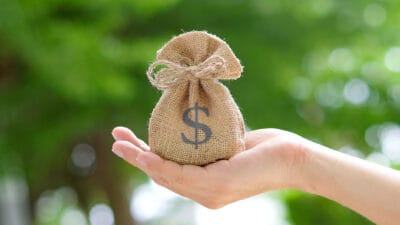As Russian troops stamp in uninvited to another sovereign nation, the thoughts of Australians are with the people of Ukraine.
The current generation has lived in relatively peaceful times as far as nation-to-nation invasions go, so this development is distressing.
As I write this article, the Russian military is expected to take over the Ukrainian capital Kyiv in a matter of hours.
While acknowledging the horrible human toll of what's happening in eastern Europe, experts have been calculating what impact war could have on stock investments.
Their opinions could surprise you.
Shares are historically resilient
Montgomery Investment Management chief investment officer Roger Montgomery is horrified by the developments in Ukraine.
"I detest armed conflict," he posted on the Montgomery blog.
"War should be avoided at all times and not prompted by immature despots, seeking acclaim they can only take to their grave."
However, analysing past military conflicts show they didn't wreak permanent damage to stock portfolios.
"Investors would be wise not to sell into the fear and weakness but instead, remember that there have been dozens, if not hundreds, of conflicts in the past and the stock market has survived," said Montgomery.
"This of course is not to diminish the very real suffering at the hands of tyrants and dictators, which democratic allies should pull all stops to prevent."
Montgomery recalled the outbreak of World War I when the NYSE was shut down on 1 August 1914 to prevent a liquidity calamity.
The exchange ended up, incredibly, closed for 4 months.
"It must have seemed grim for stock market investors, especially for anyone with capital tied up and locked down," said Montgomery.
"After the stock market reopened in 1915, however, the Dow Jones Industrial Average (INDEXDJX: .DJI) rose more than 88%."
In fact, 1915 ended up boasting the highest annual return for the Dow.
"From the start of World War I in 1914, until its end in 1918, the Dow Jones rose 43%, or about 8.7% annually."
Even the most catastrophic global events and stock losses can be recovered rapidly, according to Ritholtz Wealth Management director Ben Carlson.
"From the start of World War II in 1939 until it ended in late 1945, the Dow was up a total of 50%, more than 7% per year," he said.
"The relationship between geopolitical crises and market outcomes isn't as simple as it seems."
Remember, investing is for the long term
Switzer Financial founder Peter Switzer is reminding his clients that investing is for the long haul.
"They're supposed to be patient long-term investors aiming for average returns of 7% or 8% a year over a decade," he wrote on SwitzerDaily.
"A good portfolio can do that, despite the fact some years they could fall by 15% or even 20%… Then they can boom by 22% in a year, which was the case for lots of our clients after the coronavirus crash of the stock market resulted in a big rebound for stocks."
Knowing that historically a rebound is to follow, Montgomery suggested investors to buy during uncomfortable times.
"It has, indeed, been wise, historically, to invest at the depths of the conflict when fear was at its extreme."









